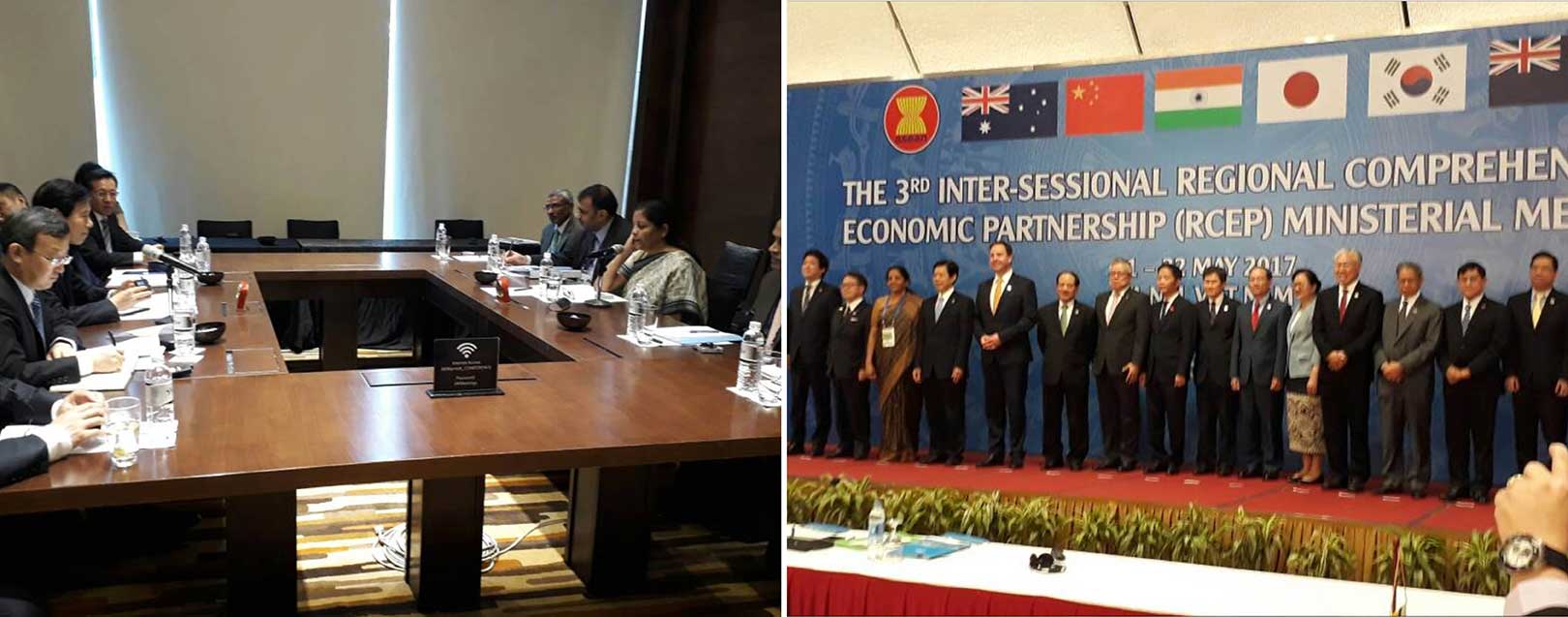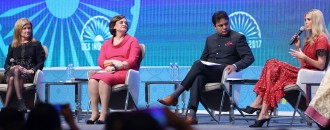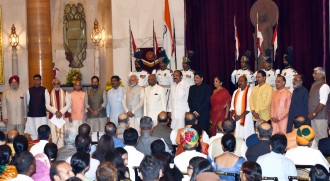
India pressured to give up on tariffs at RCEP, Hanoi
The Dollar Business Bureau (sourced from Reuters)
The 3rd Regional Comprehensive Economic Partnership (RCEP) Intersessional Ministerial Meeting at Hanoi was held between 21-22 May. The Indian side was led by Commerce and Industries Minister Nirmala Sitharaman. Trade ministers from Asia-Pacific region were meeting to speed up the stalled negotiations and finalize a trade agreement, amidst growing fears of trade protectionism. The RCEP, with the attendance of Ministers and Vice Ministers from ASEAN, Australia, New Zealand, China, Japan, Korea and India led by China is seeking to finalize an agreement by the end of 2017. The 1st RCEP negotiation round was held in Brunei Darussalam in 2013 and since then 18 rounds of senior level negotiations have been held.
The convening of the Intersessional Minister’s meeting was to take stock of the status of RCEP negotiations including the challenges faced and to provide political guidance to the negotiators on key outstanding areas namely goods, services and investment and in the rules, with the view to push for a timely conclusion of RCEP negotiations. However disagreements over a China-backed free trade deal slowed down the talks raising doubts whether the negotiations could be concluded by the end of this year.
Media reports from Hanoi suggested that India’s reluctance to give up on tariffs fuelled those doubts. India was concerned that major tariff elimination would cut revenue and their competitiveness with China.
The other major sticking point in the discussion was the coverage given to services and digital economy which was very modest and it would have no protection for labour rights or the environment.
Hanoi also saw the first gathering of the Asia Pacific Economic Cooperation (APEC) countries who could also be a part of the TPP and RCEP trade deals which are not mutually exclusive.
Speaking about the sore points, New Zealand’s Trade Minister, Todd McClay told Reuters that, “We are making progress but there's still a long way to go. There is a renewed desire to find a way to a high quality outcome. But it's going to take a lot of hard work to get it done by the end of the year."
Insisting on the timeframe of the discussions, the Phillipines Secretary of Trade and Industry, Ramon Lopez remarked, "We are at this stage where it has become important to all of us to show political willingness to move our discussions forward, especially in light of the trends in some parts of the world where a return of protectionism is being considered.”
The Vietnamese Minister of Industry and Trade Tran Tuan Anh said, "In the context that protectionism is emerging in a number of major economies in the world, we believe that the conclusion of the RCEP agreement negotiation will convey a clear and consistent message of the opening up and economic integration enhancing policy of the countries in the region."
However there was positive progress made in two of the 20 chapters of the RCEP agreement namely on technical and economic cooperation and on SMEs. In all likelihood further progress will be made in the next round of RCEP senior officials meet, which will be held at Hyderabad between 19-28 July. The ministers will once again meet in Phillipines in September to further review the progress and take stock of the unresolved ones.
The RCEP’s intention is to reduce tariffs however there is minimal chance that many would be cut to zero as seen in the TPP agreement. The goal is to create a free trade area between China, South Korea, Japan, India, New Zealand and other SouthEast Asian countries. The talks which began in 2012, have gained importance by US’s recent move of withdrawing from the Trans Pacific Partnership Agreement (TPP). The RCEP is now the world’s largest free regional trade agreement. The conclusion and implementation of RCEP will give a boost to the countries involved as they are among the fastest growing economies in the world. In other words this is an integrated market of 3.5 billion people.






 to success.
to success.